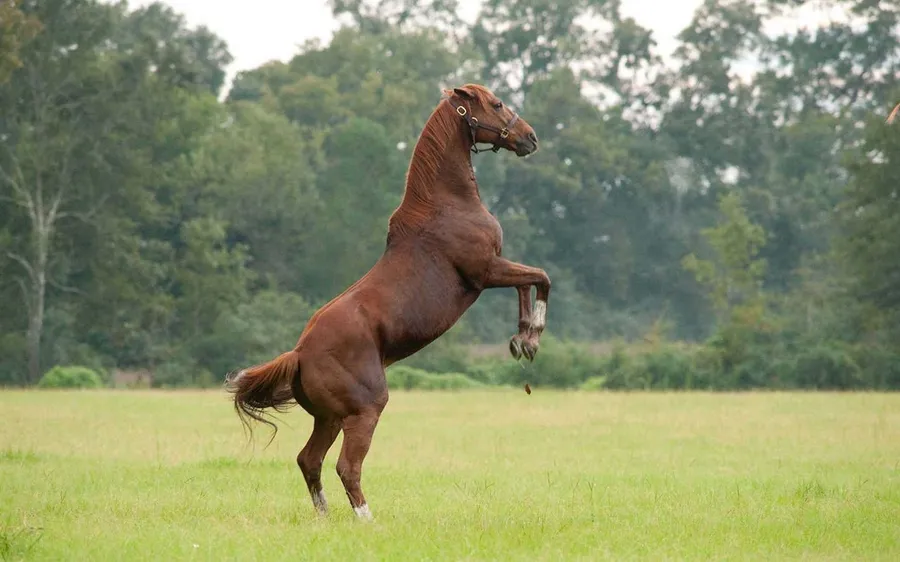The Art of Naming a Race Horse
 Naming a racehorse sounds easy, right? Just pick a cool name, and you’re done. Well, not exactly. There are a bunch of rules to make sure no two racehorses share the same racing name. It’s not just the birth name, like Secretariat’s “Big Red,” but the official name used in horse racing.
Naming a racehorse sounds easy, right? Just pick a cool name, and you’re done. Well, not exactly. There are a bunch of rules to make sure no two racehorses share the same racing name. It’s not just the birth name, like Secretariat’s “Big Red,” but the official name used in horse racing.
Curious about how it all works? Let’s dive into the intriguing process of naming a racehorse and the regulations involved.
Let’s Discuss Age
Okay, so you’re probably thinking, “What in the world does age have to do with naming a horse?” But the answer is quite a lot. In the world of racehorses, every horse has its birthday celebrated on January 1. It doesn’t matter if it was actually born in April or October—come January 1, they officially age by one year. This might sound a bit odd, but it’s actually a clever way to keep horses grouped by age for competitive races and other events.
Right after a foal is born, there’s a ticking clock for registration. Within a year, each horse has to be registered with the Jockey Club. And let me tell you, it’s no walk in the park. The registration process includes having the foal’s DNA typed to confirm its lineage. Plus, both of its parents must also be registered and have DNA or blood type. But hold on—there’s more. The horse can’t be born through artificial insemination or embryo transfer. Is your head spinning yet?
Once the registration is all said and done, you would think that naming would be a breeze. But nope, by February of their two-year-old year, these equine stars must have their official racing name. This is where things get really tangled and complex—a bit like unraveling a ball of yarn!
Meeting Name Guidelines
When it comes to naming a racehorse, it’s a real adventure through a maze of guidelines and creativity. Picture this: you’re the owner of a brand new, sprightly foal, and you’ve got the exciting task of naming it. You don’t just pick one name and hope for the best; you submit up to six options to the Jockey Club. Then, they choose which name gets the nod. But what if you buy a horse and dislike its racing name? No worries. With some cash from the Jockey Club, you can pay for a name change.
Before you get carried away, remember names can only be up to 18 characters long, including spaces and punctuation. And there are rules! No “filly” or “colt” endings, no numbers unless spelled out and above thirty, and definitely no sneaky initials. Forget about naming your horse after a celebrity—unless you’ve got written permission. All Hall of Fame or Eclipse Award winners are out and don’t even think about anything suggestive or potentially offensive. Oh, and simply sounding like another name can get you booted from the list!
Despite the mountain of rules, some owners get cheeky with creative spellings to skirt around them. But if all your names get the red pen or you’re stumped like a deer in headlights, the Jockey Club will step in and name your horse for you. Once a name is selected, your horse proudly wears its official name tattooed under its upper lip, like a badge of honor, linked forever to its registration. That’s right—it’s more than a name; it’s an identity!
Now That You Know About Horse Naming, What’s the Next Horserace You’ll Watch?
So, with the 2024 Breeders’ Cup World Championships coming up, you’ve got the perfect chance to see these creatively named equine stars in action. Secure your spot with Breeders’ Cup Experiences Official Ticket Packages for unparalleled track views and VIP treatment. Watch as these masterfully named champions burst from the gates, and maybe you’ll discover your own favorite future champion!
And if you’re a real enthusiast, you may want to start analyzing the Breeders Cup odds 2024 right away. Who knows, you may even uncover the next record-breaking racehorse and have a hand in naming it!